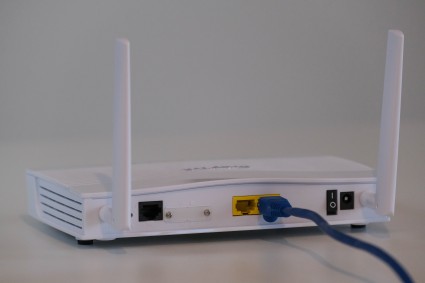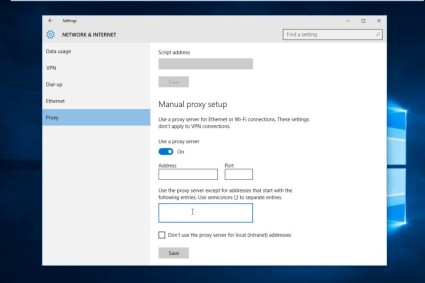
There are few things as frustrating as having your laptop connected to the internet, but no internet is actually available. This issue can arise for a variety of reasons, from physical connection issues to driver incompatibilities. Fortunately, there are some basic troubleshooting steps that you can take to try and solve the problem.
Content of the page
Make sure first that you have connected your laptop to the internet the right way.
Introduction to the Problem
When your laptop is connected to the internet but no internet is available, it means that your laptop is connected to a network that is not allowing you to access the internet. This can be caused by a variety of problems, ranging from physical connection issues to driver incompatibilities.
Common Symptoms
When your laptop is connected to the internet but no internet is available, you may experience a variety of symptoms. These symptoms can include:
- Your laptop is connected to a network, but you cannot access the internet.
- You may see a “No Internet Access” or “Limited Access” message next to the network connection icon.
- You may be unable to open web pages or access any online services.
If you are experiencing any of these symptoms, then it is likely that your laptop is connected to the internet but no internet is available.
Basic Troubleshooting Steps

If you are experiencing the symptoms mentioned above, then there are some basic troubleshooting steps that you can take to try and solve the problem. These steps are:
| Check the Physical Connections |
| Restart Your Laptop and Modem/Router |
| Verify Network Adapter Settings |
| Update Network Drivers |
1. Check the Physical Connections
The first step to take when troubleshooting this issue is to check the physical connections. Make sure that the network cable is securely connected to your laptop and that it is plugged into the correct port on the router. If you are using a wireless connection, make sure that your laptop is close enough to the router and that the signal strength is good.
2. Restart Your Laptop and Modem/Router
If the physical connections are all correct, then the next step is to restart your laptop and your modem/router. Restarting your laptop and modem/router can sometimes solve the issue, as it will reset the connection and allow you to access the internet.
3. Verify Network Adapter Settings
The next step to take is to verify the network adapter settings. Make sure that the network adapter is enabled and that the proper settings are configured. You can do this by going to the “Network and Sharing Center” in the Control Panel and selecting “Change adapter settings”.
4. Update Network Drivers
The last step to take is to make sure that your network drivers are up to date. You can do this by going to the manufacturer’s website and downloading the latest drivers for your network adapter. Installing the latest drivers may help resolve any incompatibility issues that you may be experiencing.
Advanced Troubleshooting Techniques
| Reset TCP/IP Stack |
| Flush DNS Cache |
| Release and Renew IP Address |
| Disable and Enable Network Adapter |
| Run Network Troubleshooter |
| Disable Firewall and Antivirus Software |
| Check for Malware or Adware |
| Reset Modem/Router to Factory Settings |
1. Reset TCP/IP Stack
Resetting the TCP/IP stack is one of the more advanced troubleshooting techniques for a laptop connected but no internet issue. This is because resetting the TCP/IP stack can reset the settings of a laptop’s connection to the internet, eliminating any errors that may be occurring, and restoring the connection. To reset the TCP/IP stack, the following steps need to be taken:
- Press Windows + R to open the Run window.
- Type cmd and press Enter to open the Command Prompt.
- Type netsh int ip reset and press Enter to reset the TCP/IP stack.
- Restart the laptop.
2. Flush DNS Cache
Flushing the DNS cache is another troubleshooting technique that can be used when a laptop is connected but no internet is available. Flushing the DNS cache removes any DNS records that are stored on the laptop, which can help to resolve any DNS errors that may be occurring. To flush the DNS cache, the following steps need to be taken:
- Press Windows + R to open the Run window.
- Type cmd and press Enter to open the Command Prompt.
- Type ipconfig /flushdns and press Enter to flush the DNS cache.
3. Release and Renew IP Address
Releasing and renewing the IP address is another solution to try when a laptop is connected but no internet is available. Releasing and renewing the IP address can help to resolve any IP conflicts that may be occurring, allowing the laptop to connect to the internet successfully. To release and renew the IP address, the following steps need to be taken:
- Press Windows + R to open the Run window.
- Type cmd and press Enter to open the Command Prompt.
- Type ipconfig /release and press Enter to release the IP address.
- Type ipconfig /renew and press Enter to renew the IP address.
4. Disable and Enable Network Adapter
Disabling and enabling the network adapter can help to resolve a laptop connected but no internet issue. This is because disabling and then enabling the network adapter can reset any settings that may be causing the issue, allowing the laptop to connect to the internet successfully. To disable and enable the network adapter, the following steps need to be taken:
- Open the Device Manager.
- Expand the Network Adapters list.
- Right-click on the network adapter and select Disable.
- Right-click on the network adapter and select Enable.
5. Run Network Troubleshooter
Running the network troubleshooter is another advanced troubleshooting technique that can be used when a laptop is connected but no internet is available. The network troubleshooter can detect any errors that may be causing the issue and provide solutions to fix them, allowing the laptop to connect to the internet successfully. To run the network troubleshooter, the following steps need to be taken:
- Open the Settings app.
- Navigate to Network & Internet.
- Select Troubleshoot.
- Select the Network Adapter troubleshooter.
- Follow the on-screen instructions to run the troubleshooter.
6. Disable Firewall and Antivirus Software
Disabling firewall and antivirus software can help to resolve a laptop connected but no internet issue. This is because firewall and antivirus software can block certain connections, preventing the laptop from connecting to the internet successfully. To disable firewall and antivirus software, the following steps need to be taken:
- Open the Settings app.
- Navigate to Update & Security.
- Select Windows Security.
- Select Virus & threat protection.
- Select Manage settings.
- Turn off the Real-time protection toggle.
7. Check for Malware or Adware
Checking for malware or adware is another advanced troubleshooting technique that can be used when a laptop is connected but no internet is available. Malware and adware can interfere with a laptop’s connection to the internet, causing the laptop to be unable to connect successfully. To check for malware or adware, the following steps need to be taken:
- Open the Settings app.
- Navigate to Update & Security.
- Select Windows Security.
- Select Virus & threat protection.
- Select Scan options.
- Select Full scan.
- Follow the on-screen instructions to scan for malware or adware.
8. Reset Modem/Router to Factory Settings
Resetting the modem/router to factory settings is the last resort when a laptop is connected but no internet is available. This is because resetting the modem/router can reset any settings that may be causing the issue, allowing the laptop to connect to the internet successfully. To reset the modem/router to factory settings, the following steps need to be taken:
- Locate the Reset button on the modem/router.
- Press and hold the Reset button for 10 seconds.
- Release the Reset button.
- The modem/router will now be reset to factory settings.
Additional Considerations

| Compatibility with Network Protocols |
| Wireless Interference and Signal Strength |
| Bandwidth Limitations and Network Congestion |
| Proxy Settings and VPN |
1. Compatibility with Network Protocols
When trying to troubleshoot a laptop connection issue, it is important to consider whether the laptop is compatible with the network protocols used by the router. Some routers may be using old or outdated protocols that may not be compatible with some laptops. Additionally, some routers may be using proprietary protocols that are not supported by certain laptops. To determine if this is the issue, you should check the router’s settings and make sure it is using the latest protocols. If the router is using an outdated or proprietary protocol, you may need to upgrade the router or switch to a different network protocol.
2. Wireless Interference and Signal Strength
Wireless interference can also be a major cause of laptop connection issues. If there are other devices in the vicinity that are emitting wireless signals, such as cordless phones, microwaves, or other wireless devices, this can cause interference with the laptop’s connection. To prevent this, you should move the laptop away from any devices that are emitting wireless signals. Additionally, you should make sure that the router is in a central location with a clear line of sight to the laptop. This will help to ensure that the signal strength is strong enough for the laptop to connect.
3. Bandwidth Limitations and Network Congestion
Another common issue that can affect laptop connections is network congestion. If there are too many devices connected to the network, it can cause the connection to slow down or become unreliable. To prevent this, you should limit the number of devices that are connected to the network. Additionally, you should make sure that the router is configured to limit the amount of bandwidth that can be used by each device.
4. Proxy Settings and VPN
In some cases, a laptop may be unable to connect to a network due to proxy settings or virtual private network (VPN) settings. If the laptop is configured to use a proxy server or VPN, it may be unable to connect to the router. To resolve this issue, you should check the proxy settings or VPN settings and make sure that they are configured correctly.
Seeking Professional Help

| Contacting Your Internet Service Provider (ISP) |
| Consulting a Computer Technician |
1. Contacting Your Internet Service Provider (ISP)
If the above steps do not resolve the issue, you should contact your internet service provider to see if they can provide any assistance. The ISP may be able to provide additional troubleshooting tips, or they may be able to provide a more reliable connection.
2. Consulting a Computer Technician
If the issue persists, you may need to consult a computer technician. A computer technician can provide additional troubleshooting tips, or they may be able to identify a hardware issue that may be causing the problem.
Preventing Future Connectivity Issues

| Regularly Update Software and Drivers |
| Secure Your Network with Strong Passwords |
| Invest in Reliable Networking Equipment |
1. Regularly Update Software and Drivers
To prevent future connectivity issues, you should regularly update the software and drivers on your laptop. Many laptop manufacturers release software and driver updates to improve the performance and security of their products. By regularly updating the software and drivers on your laptop, you can ensure that your laptop is running the latest version and is not vulnerable to security risks.
2. Secure Your Network with Strong Passwords
Another important step to preventing future connectivity issues is to secure your network with strong passwords. By setting a strong password for your network, you can prevent unauthorized access to your network and protect your data from being compromised.
3. Invest in Reliable Networking Equipment
Finally, you should invest in reliable networking equipment. Networking equipment can be expensive, but it is an important part of ensuring a reliable connection. By investing in quality networking equipment, you can ensure that your laptop will have a reliable connection when you need it.
Conclusion
When troubleshooting laptop connection issues, it is important to consider all of the potential causes. This includes checking for compatibility with network protocols, dealing with wireless interference, avoiding network congestion, and checking proxy and VPN settings. If the issue persists, you should contact your ISP or consult a computer technician. To prevent future connectivity issues, you should regularly update software and drivers, secure your network with strong passwords, and invest in reliable networking equipment.

